Prior to and during the Second World War, the Soviet Union produced the majority of its tanks for the Red Army at the Dzerzhinskiy Tractor Factory in Stalingrad (Volgograd), the Leningrad Kirov Plant (also known as Kirov Factory No. 100), and the Krasnoye Sormovo Shipyard No. 112 in Gorky (Novgorod).
However, before the war tanks were also manufactured at the Kharkov Locomotive Factory in what is today the Ukrainian city of Kharkiv (formerly Kharkov). Following the German invasion in June 1941, the facility’s equipment and much of its trained staff were evacuated to the Urals and merged with the Uralvagonzavod Factory. When the conflict ended, the factory was reestablished — renamed the Malyshev Plant in 1957 — and it began to produce such notable tanks as the T-54/55 series, the T-64, and later the T-80.
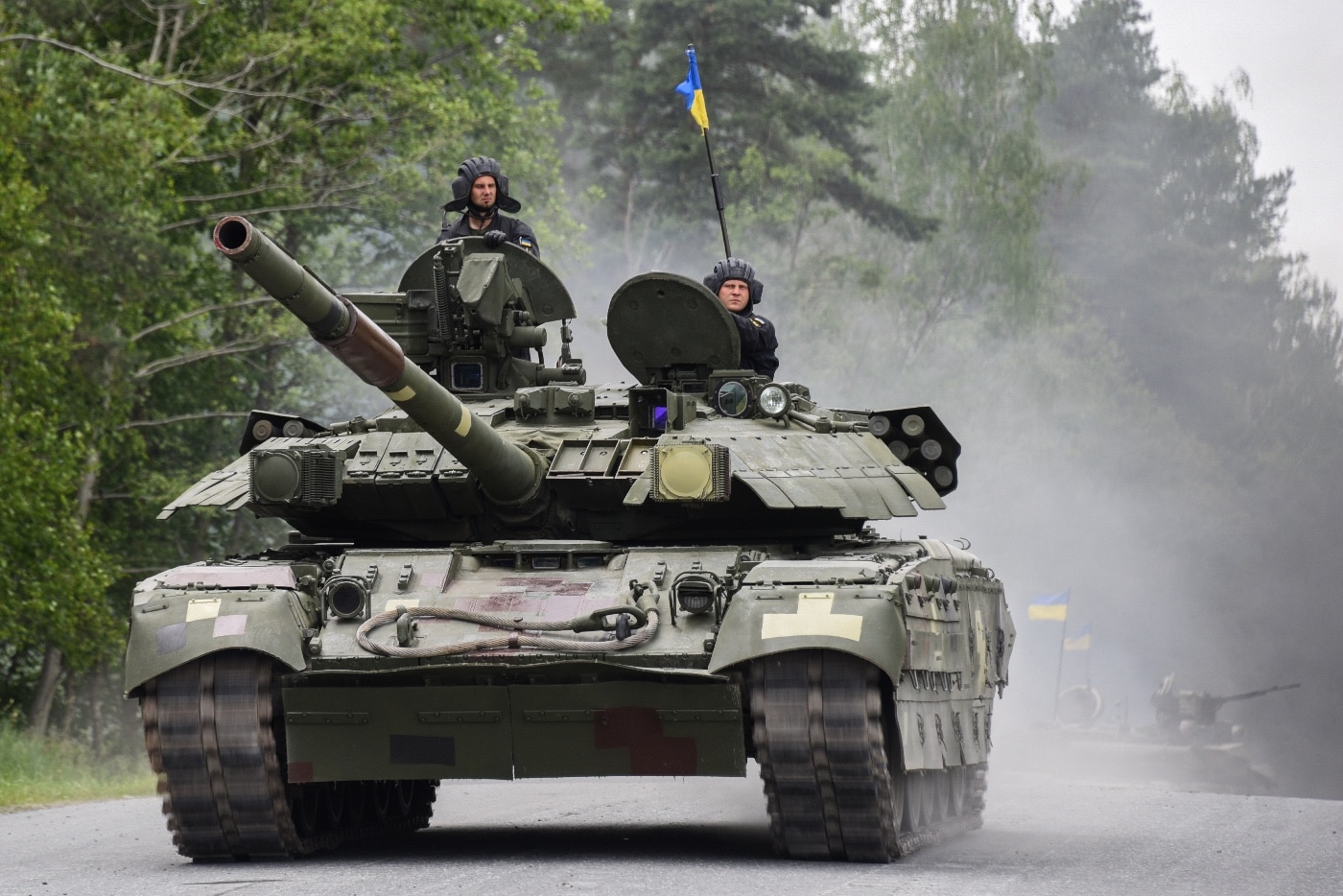
At its height in the Cold War, the factory employed 60,000 of Kharkiv’s 1.5 million residents. Even today, more than 5,000 people are employed at the facility.
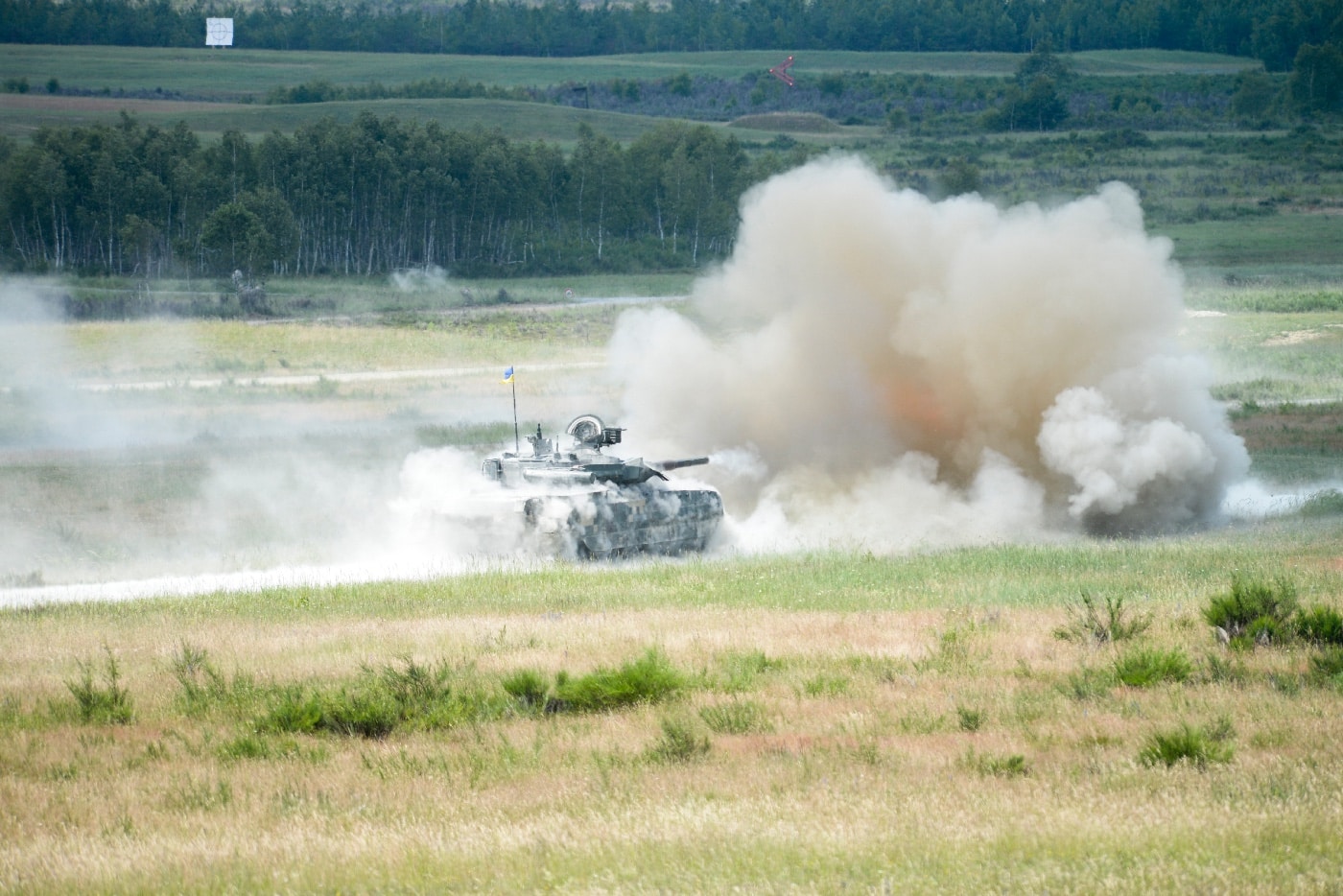
It has been noted that in the Soviet Union, finished tanks were assembled in several plants, but Moscow’s industrial planning specifically prevented any region from being able to establish independent arms production. As a result, components and sub-assemblies were produced in different factories throughout the nation. That of course changed with the dissolution of the Soviet Union in 1991 — and that in turn led to the development of an entirely new tank, the T-84.
Ukraine’s Tank Production
To understand the origins of the T-84 requires some understanding of the T-80 — which was developed from the T-64, and which was only the second MBT in the world to be equipped with a gas turbine engine, after the Swedish Stridsvagn 103. Though the last tank developed in the Soviet Union, it incorporated a number of features from the T-72.
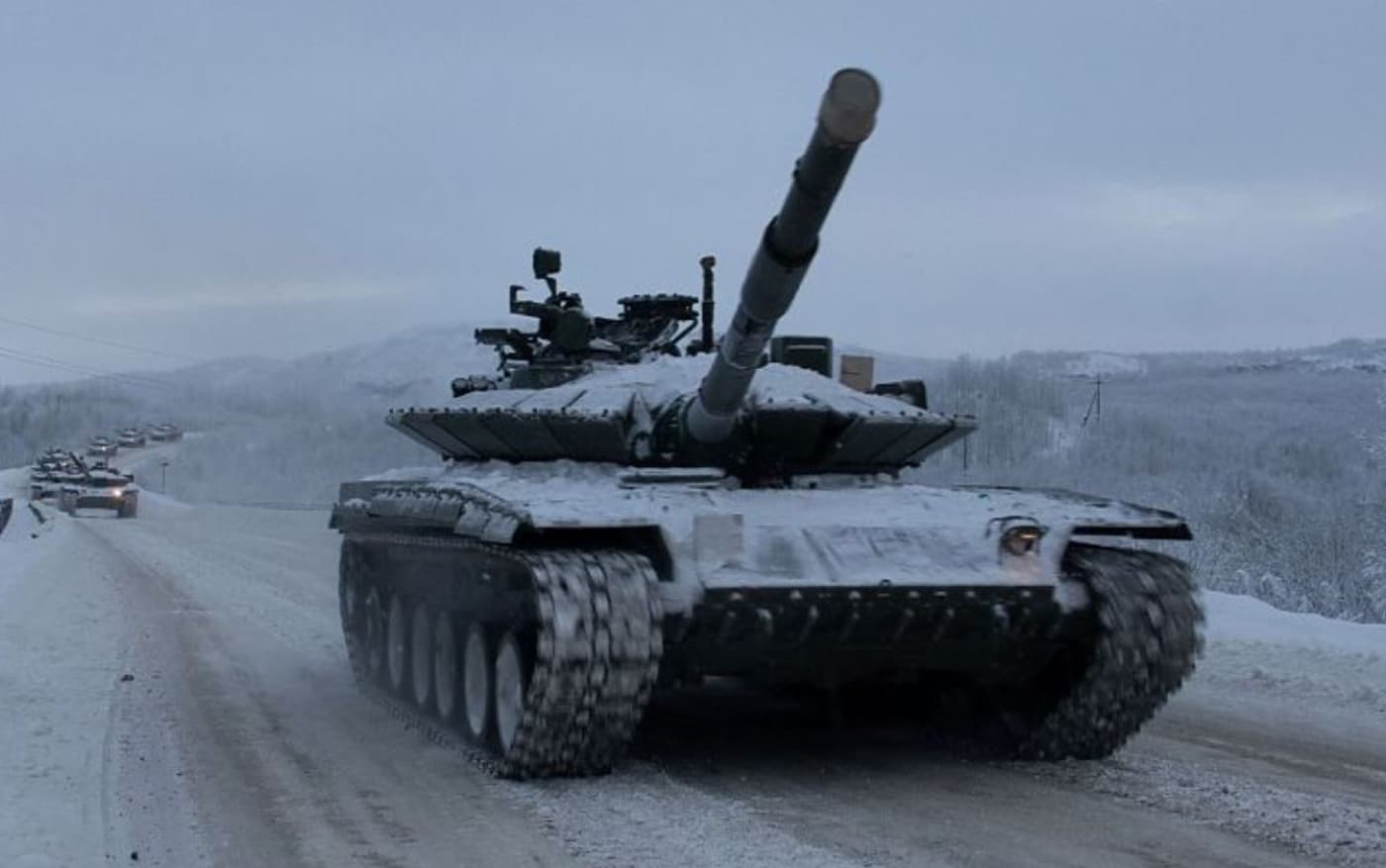
Despite being seen as a more sophisticated tank, the T-80 never proved to be an ideal platform and it actually remained in production for a reason that might only make sense in a communist nation where the state owned the factory that produced it. In the Soviet era, even as some in the Kremlin likely saw that it was a well-meant but costly mistake, it needed to be balanced with the economic consequences of closing down the facilities and laying off the workers. The T-80UD was even developed to address a number of issues, and notably, it was equipped with a more powerful 1,000hp 6TD diesel engine instead of a gas turbine that had been unique to the T-80.
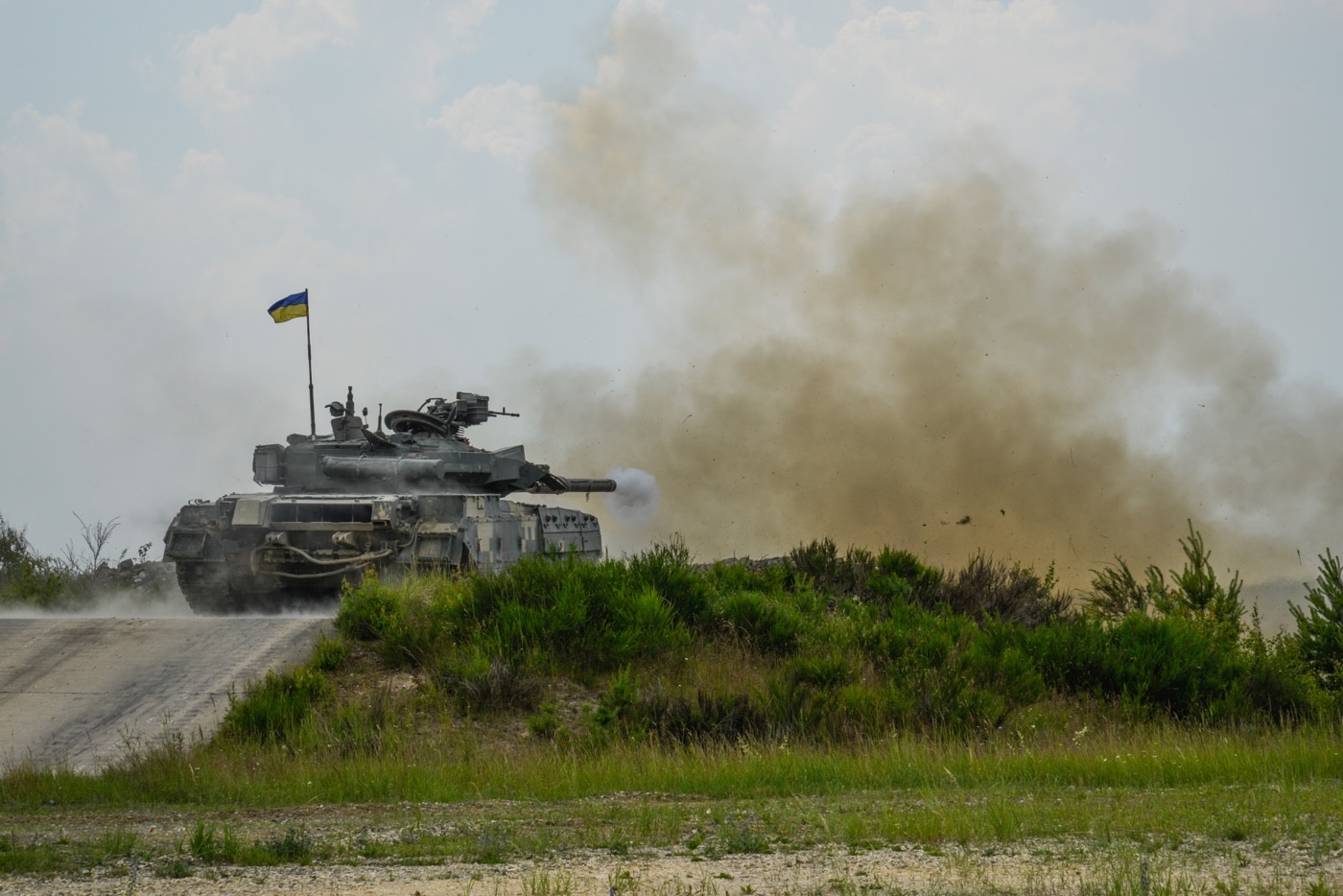
About 500 of those upgraded MBTs were produced at the Malyshev plant at the tail end of the Cold War. Then, following the dissolution of the Soviet Union in late 1991, production of the T-80UD in Ukraine became separate from that of tanks being developed and manufactured in the Russian Federation.
This presented a number of challenges for both nations. Russia addressed the issue by simply taking Malyshev out of the production chain, while it focused on the T-90 — the first post-Soviet era Russian main battle tank (MBT).
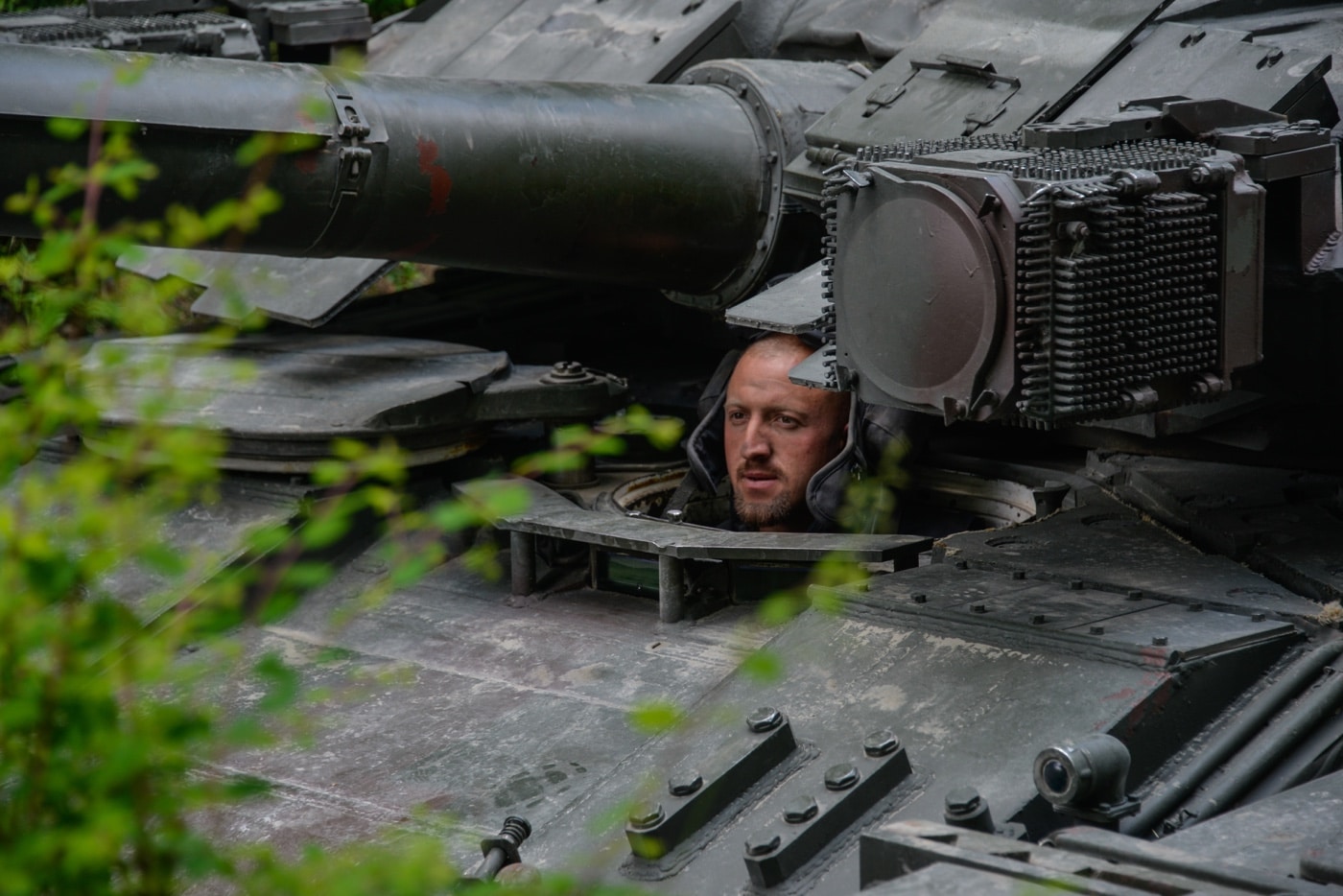
Meanwhile, the newly independent Ukraine had a facility that assembled tanks, yet didn’t actually create all the parts — including for the T-80/T-80UD. As a result, the million-square-meter facility that had produced 800 tanks in the final year of the Soviet Union was able to produce only 46 tanks over the next five years following the break-up.
Yet, Ukraine continued to seek foreign buyers for its military hardware — a point that will be addressed in more detail.
What is worth noting is that in 1996, the facility received a $650 million contract to produce 320 T-80UD tanks for Pakistan, but the program was mired down due to the fact that parts still had come from Russia. As it proved difficult to produce the T-80 MBT, the facility was forced to pivot, and the result was a fully new design, the T-84. This also addressed a number of issues with the original Soviet design, while it also marked the first significant break with Russian military hardware in Ukraine.
Enter the T-84
The T-80UD was further developed in Kharkiv by the Morozov Design Bureau into the T-84. It was basically similar but also had a more powerful 1,200hp 6TD-2 version of the two-stroke diesel engine.
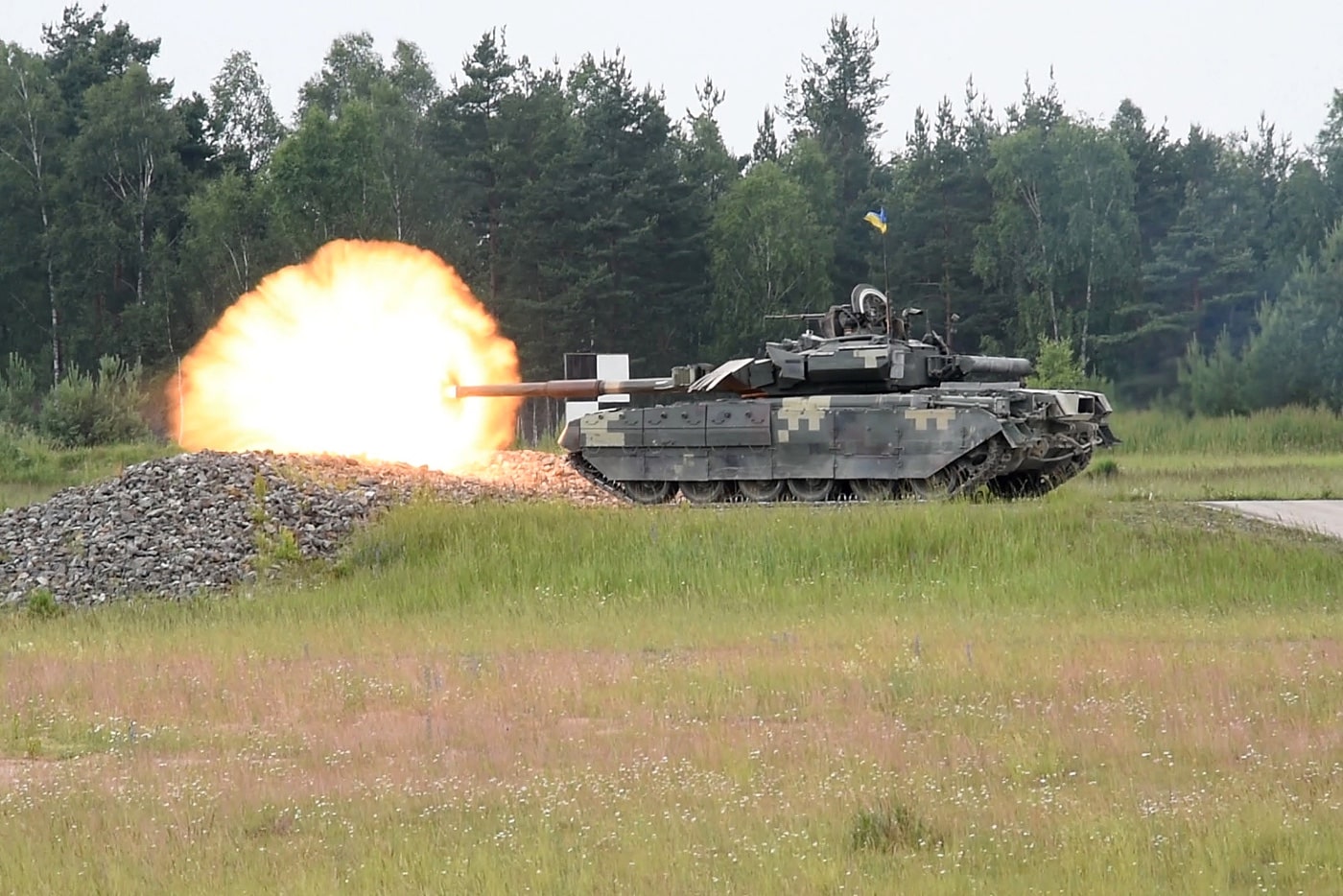
This led to the T-84-120, and it departed from what had been among the standard features of Soviet/Russian/Ukrainian tanks for more than three decades — notably the use of a 125mm gun, which was replaced by a 120mm smooth bore that fired NATO standard ammunition. In addition, the T-84-120 abandoned the carousel-type autoloader located under the turret in favor of a bustle autoloader. It was actually a consequence of the change of the main gun, but it proved to have a significant advantage.
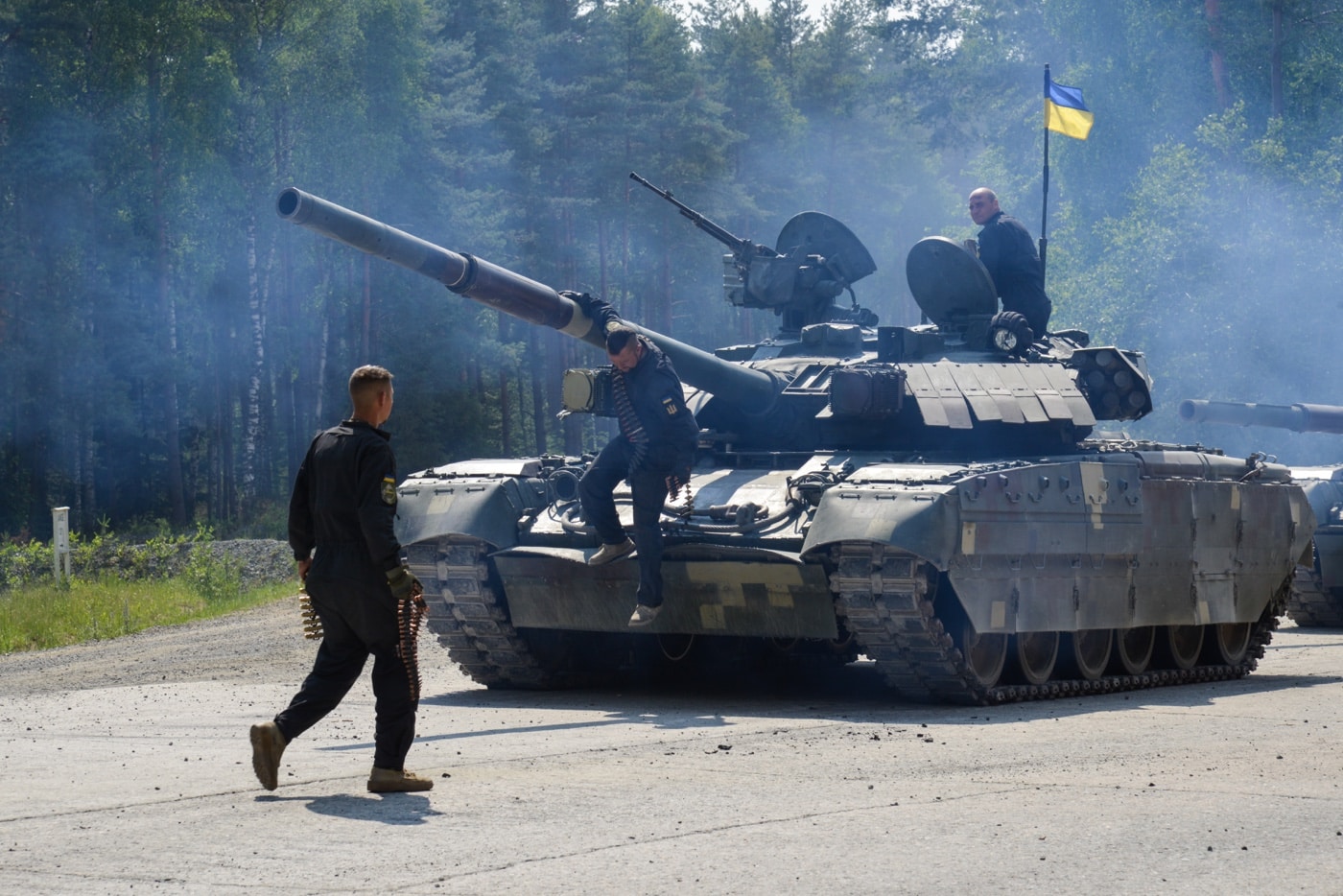
It made the tank far less vulnerable to the so-called “Jack-in-the-Box” effect whereby a direct hit at the turret can set off an explosion of the ammunition storage — causing the turret to be blown clean off the hull. Most of the ammunition was relocated to the turret bustle and separated from the crew by a bulkhead that protected the ordnance in the event of such a direct hit. The bustle compartment was similar to that of the U.S. Army’s M1 Abrams MBTs, while the T-84 also was equipped with NATO-style blowout panels that can release pressure in the event of internal explosion.
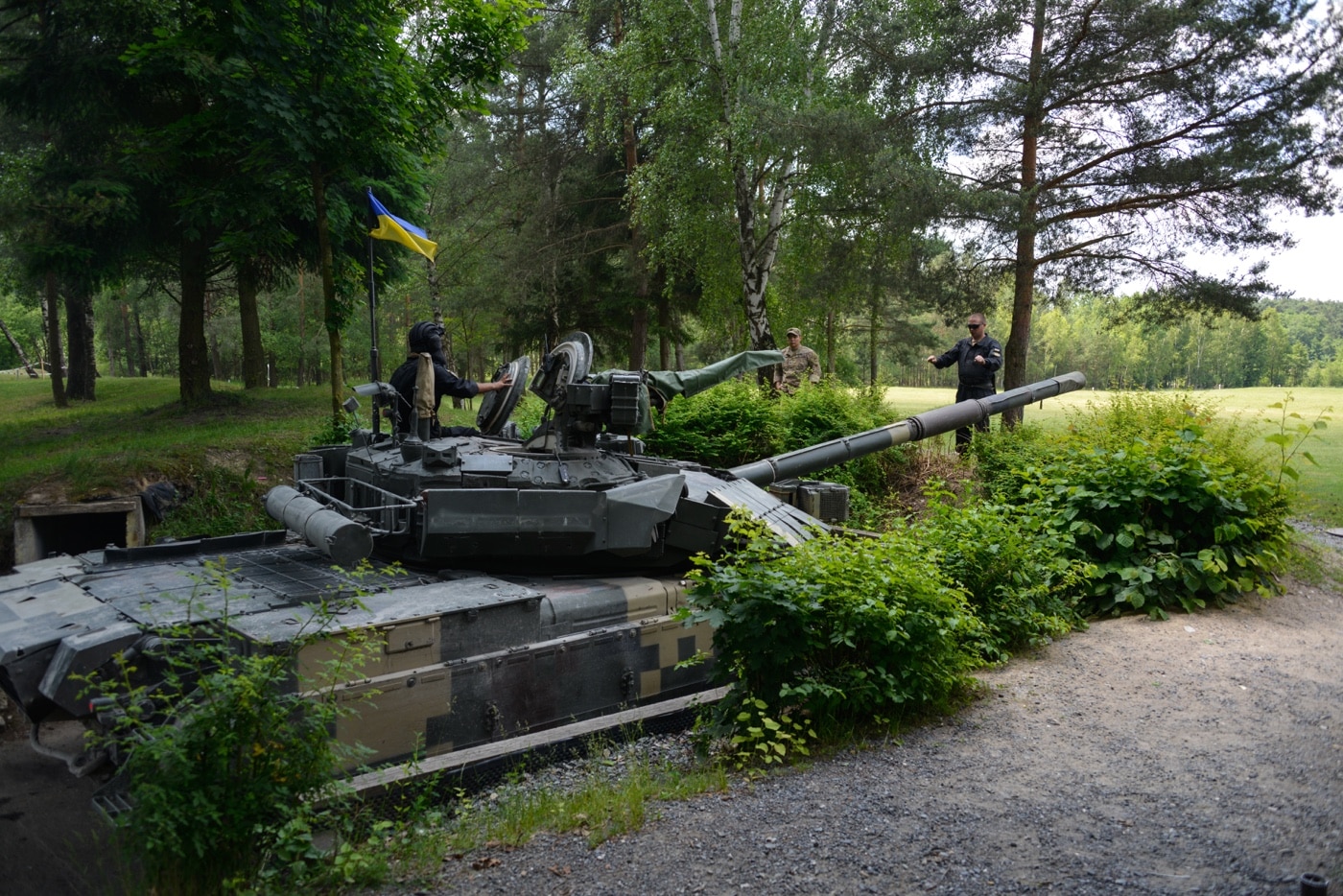
What is notable is that the Russian military introduced a similar change with its experimental T-80UM2 Black Eagle, but the Kremlin remained committed to the autoloader. That has proven to be a mistake as the T-72 and even more modern T-90 tanks have been destroyed in the ongoing war with their turrets blown off. By comparison, the British Challenger 2 and German Leopard 2 MBTs have been seen destroyed in the fighting, but with the turret intact. That latter fact suggests that the crew could have survived even if their respective tank took a direct hit near the turret.
T-84 in Combat
Despite the capabilities of the T-84, only a handful was ever produced.
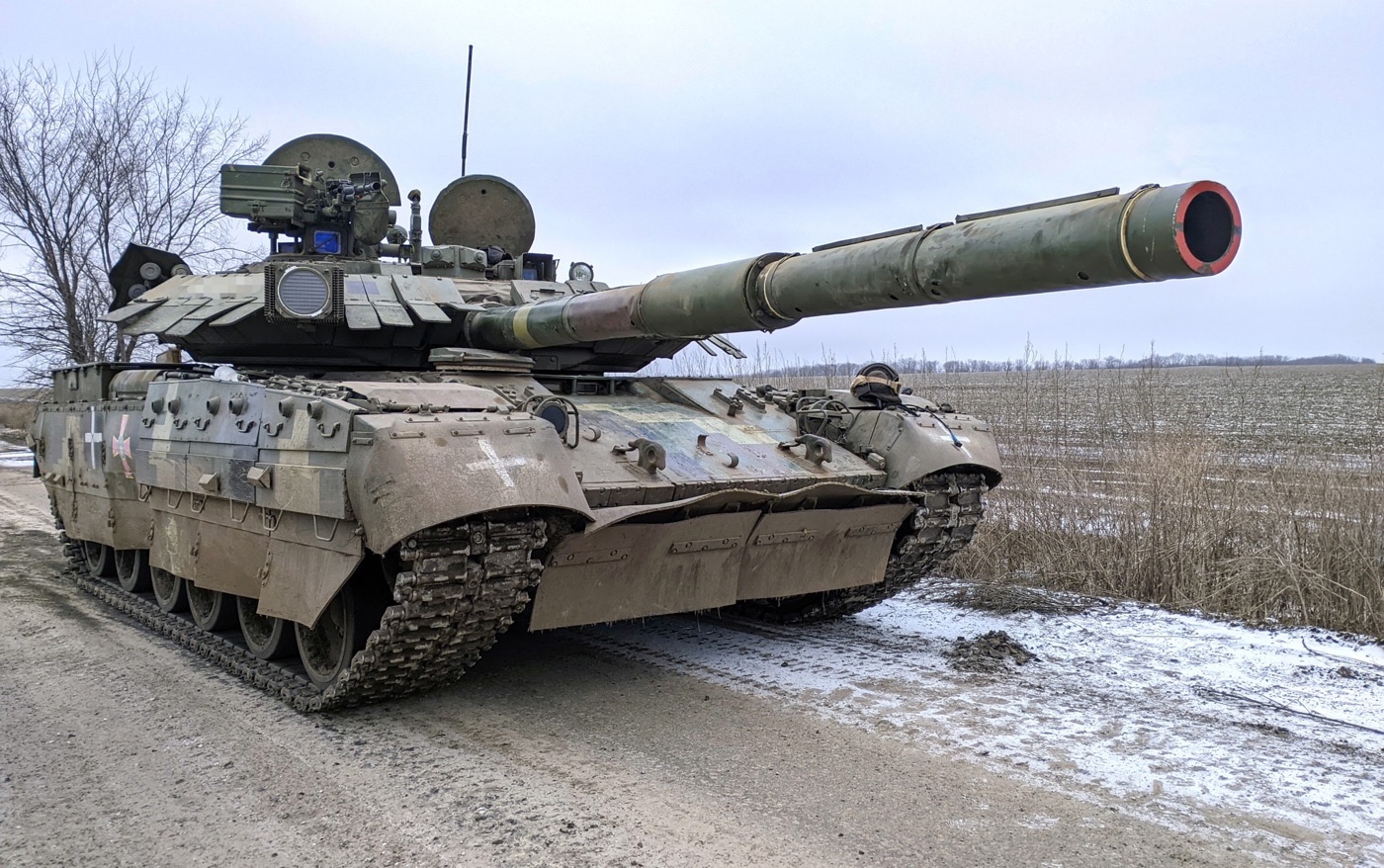
When Russia launched its unprovoked and unwarranted invasion of Ukraine in February 2022, Kyiv had just five or six T-84s in service — enough for just a single platoon. The cost was a factor for the country, as it had hundreds of functional T-64s and it seemed unlikely that the country would find itself in a war where it was forced to fight for its very existence.
According to David Axe of Forbes.com, the Ukrainian Army’s 14th Separate Mechanized Brigade was believed to be the operator of the tanks. One was reportedly damaged by a Russian-made ZALA Lancet “kamikaze” drone in February 2023.
Foreign Sales of the T-84
Following the Cold War, Ukraine had sought to compete with Russia as a supplier of arms to clients of the former Soviet Union, and that included the sale of one of the Soviet Navy’s unfinished aircraft carriers — which is currently in service with China as the Type 001 Liaoning.
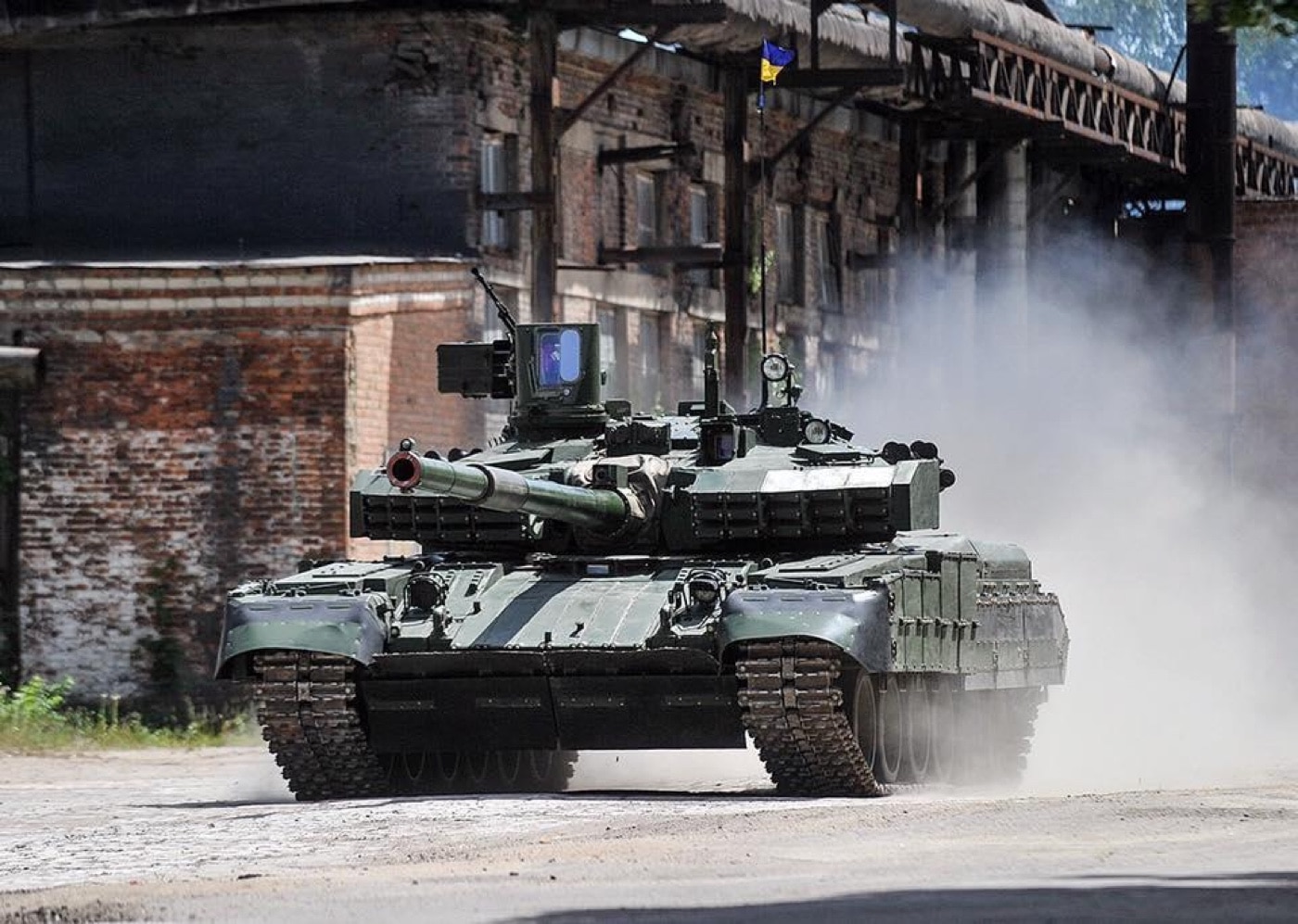
The state-owned Ukoboronprom also attempted to market the T-84 to foreign buyers.
A number of countries considered the tank, including Pakistan, Azerbaijan, Malaysia and Peru. Those nations went in “another direction,” but Thailand did acquire around 50 of the Oplot-M export models of the T-84 in 2019 to replace its aging M41A3 Walker Bulldog light tanks that dated back to the Vietnam War. The Oplot-M featured a number of minor modifications for the Thai military, including a different radio and notably an air conditioner instead of a more robust heater.
There remains some irony that Ukraine developed a more advanced tank, but could only offer it for export while its own military retained the older T-64. Another 50 of the T-84s and those 320 T-80UDs could have certainly made a difference in the ongoing war.
Ukraine’s Tank in the USA
The T-84 is arguably a tank that few Americans will ever likely see up close until the war in Ukraine comes to an end. Yet, a year before the Russian invasion of Ukraine, a T-84 was spotted halfway around the world at the Yuma Proving Ground, Arizona. It was believed to be one of four tanks that the U.S. military acquired from Kyiv for testing at the U.S. Army Aberdeen Test Center in Maryland in 2018. Those included T-80 and T-80UD tanks, but also at least one T-84.
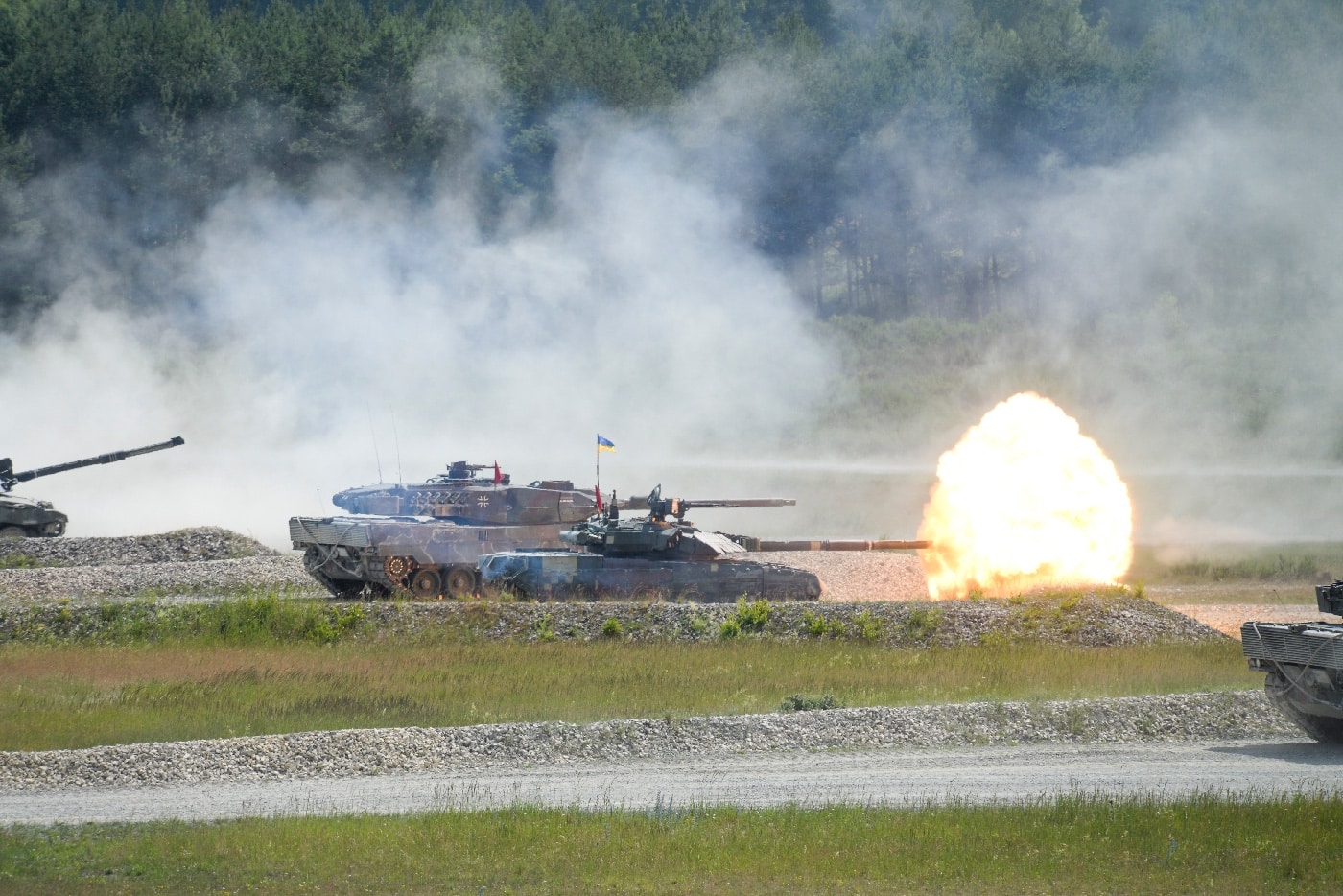
There has been speculation that the U.S. may have received up to four of the T-84s.
The U.S. Army hasn’t been very open about the number or models of the tanks it had received. What is known is that one of the T-84s was spotted at YPG’s Threat System & Target Simulation Yard in April 2020 and then again in February 2021. It is common for Yuma and Aberdeen to acquire foreign-made vehicles for testing/training purposes.
Not much has been said about those tanks — and that has led to fully unverified and unconfirmed speculation that the U.S. military may have returned those tanks to Ukraine.
As it stands, the T-84 has been deployed in combat with no confirmed losses — and only the one has been confirmed damaged in the drone attack. When this war ends, it is very likely that foreign buyers may be interested in taking another look at the Ukrainian platform.
Editor’s Note: Please be sure to check out The Armory Life Forum, where you can comment about our daily articles, as well as just talk guns and gear. Click the “Go To Forum Thread” link below to jump in and discuss this article and much more!
Join the Discussion
Read the full article here







![Best Micro Compact 9mm Pistols [Field Tested] Best Micro Compact 9mm Pistols [Field Tested]](https://i2.wp.com/gundigest.com/wp-content/uploads/EDC-X9-2-review-target.jpg?w=1024&resize=1024,1024&ssl=1)



